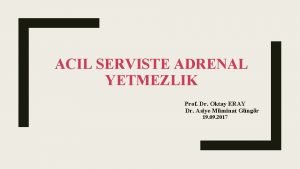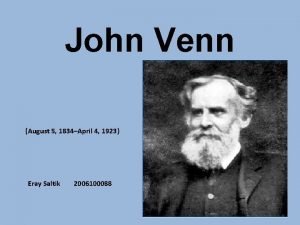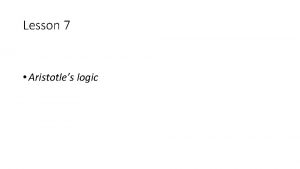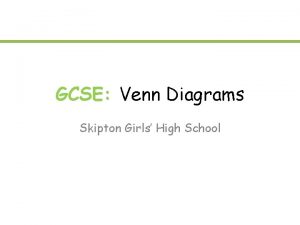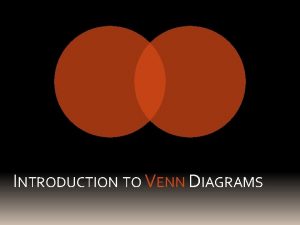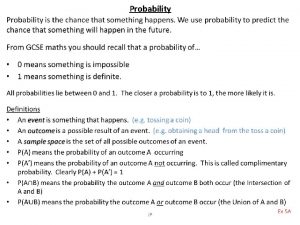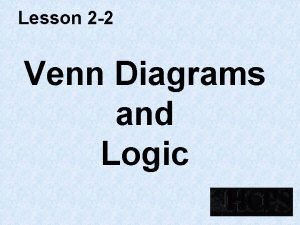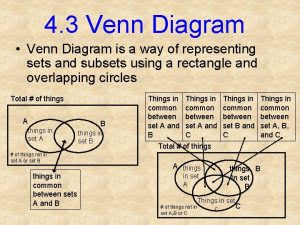John Venn August 5 1834April 4 1923 Eray












- Slides: 12

John Venn (August 5, 1834–April 4, 1923) Eray Saltik 2006100088

John Venn • British logician and philosopher, born at Yorkshire in 1834 • John Venn's mother, Martha Sykes, came from Swanland near Hull, Yorkshire and died while John was still quite young. • Venn's father, Rev Henry Venn and his grandfather, Rev John Venn played a prominent role in the evangelical Christian movement.

John Venn • Although it was expected that he would follow the family tradition into the Christian ministry; after Highgate School, Venn entered Gonville and Caius College, Cambridge, in 1853. • He graduated in 1857 and shortly afterwards he was elected a fellow of the college. • He was ordained as a deacon at Ely in 1858 and became a priest in 1859.

John Venn • Venn's main area of interest was logic and he published three texts on the subject. • He wrote The Logic of Chance which introduced the frequency interpretation of probability in 1866, Symbolic Logic which introduced the Venn diagrams in 1881, and The Principles of Empirical Logic in 1889.

John Venn • In 1883, Venn was elected to the Royal Society. In 1897, he wrote a history of his college, called The Biographical History of Gonville and Caius College, 1349– 1897. • He commenced a compilation of biographical notes of the alumni of Cambridge University, a work which was continued by his son, John Archibald Venn and published as Alumni Cantabrigienses in 10 volumes from 19221953.

Venn Diagram • Venn diagrams or set diagrams are diagrams that show all hypothetically possible logical relations between a finite collection of sets. • They are used in many fields, including set theory, probability, logic, statistics, and computer science.

Venn Diagram • A Venn diagram is a diagram constructed with a collection of simple closed curves drawn in the plane. The principle of these diagrams is that classes be represented by regions in such relation to one another that all the possible logical relations of these classes can be indicated in the same diagram.

Venn Diagram

Venn Diagram • Venn diagrams normally consist of overlapping circles. For instance, in a twoset Venn diagram, one circle may represent the group of all wooden objects, while another circle may represent the set of all tables. The overlapping area (intersection) would then represent the set of all wooden tables. Shapes other than circles can be employed and this is necessary for more than three sets.

Venn Diagram • Top: an Euler diagram for set inclusion. Below, middle to bottom: set union and intersection illustrated by Venn diagrams.

Venn Diagram • Stained glass window at Gonville and Caius College, Cambridge, commemorating Venn and the Venn diagram.

Thank You!







